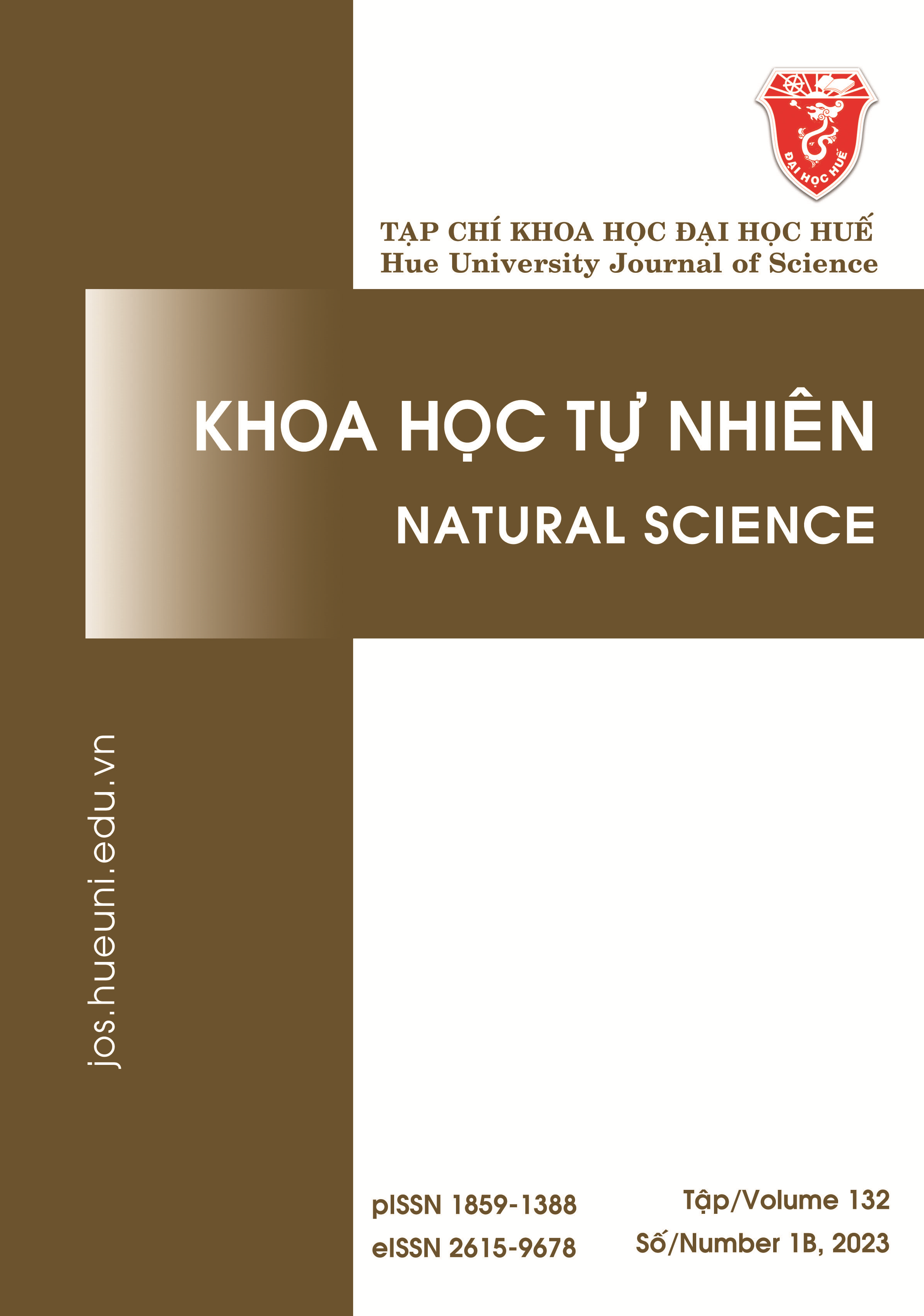Abstract
Centella asiatica (L.) Urb., belonging to the Apiaceae family, grows widely in shady, moist or marshy places. C. asiatica has been used in traditional medical systems in Asia for over 100 years. A better understanding of genetic diversity is essential for its conservation and use. In this study, we performed the genetic diversity analysis for 24 cultivars of Centella asiatica using 24 selected RAPD markers. There are genetic differences among the studied samples. However, the molecular screening with RAPD markers shows that genetic difference (0.0025–0.2194) and genetic diversity indices (%P = 42.02%, h = 0.1272, I = 0.1938) are relatively low. Besides, HUIB_CA06 and HUIB_CA26 (from Thua Thien Hue province) are genetically different from the remaining varieties, which warrants further analysis of these varieties.
References
- James JT, Dubery IA. Pentacyclic triterpenoids from the medicinal herb, Centella asiatica (L.) Urban. Molecules. 2009;14(10):3922-3941.
- Brinkhaus B, Lindner M, Schuppan D, Hahn EG. Chemical, pharmacological and clinical profile of the East Asian medical plant Centella asiatica. Phytomedicine. 2000; 7(5):427-448.
- Bylka W, Znajdek-Awizen P, Studzinska-Sroka E and Brzezinska M. Centella asiatica in cosmetology. Postepy Dermatologii i Alergologii. 2013;30(1):46-49.
- Zaidan MR, Noor Rain A, Badrul AR, Adlin A, Norazah A, Zakiah I. In vitro screening of five local medicinal plants for antibacterial activity using disc diffusion method. Tropical Biomedicine. 2005;22 (2):165-170.
- Chi VV. Cay rau lam thuoc. Dong Thap: Dong Thap Publisher; 1998.
- Siddiqui BS, Aslam H, Ali ST, Khan S, Begum S and 9(4) Chemical constituents of Centella asiatica. Journal of Asian Natural Products Research. 2007; 9 (4): 407-414.
- Aziz ZA, Davey MR, Power JB, Anthony P, Smith RM, Lowe KC. Production of asiaticoside and madecassoside in Centella asiatica in vitro and in vivo. Biologia plantarum. 2007;51(1):34-42.
- Popovich DG, Hu C, Durance TD, Kitts DD. Retention of ginsenosides in dried ginseng root: Comparison of drying methods. Journal of Food Science. 2005;70(6):S355–S358.
- Bich DH, Chung DQ, Chuong BX, Dong NT, Dam DT, Hien PV, et al. Cay thuoc va dong vat lam thuoc o Viet Nam, volume 2. Ho Chi Minh: Science and Technology Publisher. p. 582-586. 2006.
- Antonio AFG, Luciana LB, Antônia MMB, Isaias OG, Cláudio LS, Anete PS. Comparison of RAPD, RFLP, AFLP and SSR markers for diversity studies in tropical maize inbred lines. Genetics and Molecular Biology. 2004;27(4):579-588.
- Jiang GL. Molecular Markers and Marker-Assisted Breeding in Plants. In: Sven Bode Andersen (Eds.), Plant Breeding from Laboratories to Fields. 2013.
- Newton AC, Allnut T, Gillies ACM, Lowe A, Ennos RA. Molecular phylogeography, intraspecific variation and the conservation of tree species. Trends in Ecology and Evolution. 1999; 14(4):140-145.
- Doyle JJ, Doyle JL. A rapid DNA isolation procedure for small quantities of fresh leaf tissue. Phytochemical Bulletin. 1987;19(1):11-15.
- Weising K, Nybom H, Wolff K and Kahl G. DNA fingerprinting in plants: principles, methods and applications. Boca Raton: CRC press; 2005.
- Truong HTH, Kim JH, Cho MC, Chae SY and Lee HE. Identification and development of molecular markers linked to Phytophthora root rot resistance in pepper (Capsicum annuum L.). European Journal of Plant Pathology. 2013;135:289-297.
- Yeh FC, Yang RC, Boyle TBJ, Ye ZH and Mao JX. POPGENE, the user-friendly shareware for population genetic analysis. Molecular Biology and Biotechnology Centre, University of Alberta, Canada. 1997.
- Sokal RR and Michener CD. A statistical method for evaluating systematic relationships. The University of Kansas Science Bulletin. 1958;38:1409-1438.
- Nei M. Molecular Evolutionary Genetics: New York: Columbia University Press; 1987.
- Weising K, Nybom H, Pfenninger M, Wolff K, Meyer W. DNA fingerprinting in plants and fungi. Boca Raton: CRC press; 1994.
- Guadagnuolo R, Savova-Bianchi D, Felber F. Gene flow from wheat (Triticum aestivum L.) to jointed goatgrass (Aegilops cylindrica Host.), as revealed by RAPD and microsatellite markers. Theor Appl Genet. 2001;103:1-8.
- Beardmore JA. Extinction, survival, and genetic variation. In: Schoenwald-Cox CM, Chambers SM, MacBryde B, Thomas L (eds) Genetics and conservation. Benjamin-Cummings: Menlo Park, CA; 1983;125-151.
- Waugh R and Powell W. Using RAPD markers for crop improvement. Trends Biotechnol. 1992;10:186–191.
- Slatkin M. Gene flow and genetic drift in a species subject to frequent local extinctions. Theoretical Population Biology. 1977;12(3):253-262.
- Sakthipriya M, Vishnu SS, Sujith S, Kumar PR, Sabu KK. Analysis of Genetic Diversity of Centella asiatica Using SSR Markers. International Journal of Applied Sciences and Biotechnology. 2018;6(2):103-109.
- Karp A, Seberg O, Buiatt M. Molecular techniques in the assessment of botanical diversity. Annals of Botany. 1997;78(2):143-149.

This work is licensed under a Creative Commons Attribution-ShareAlike 4.0 International License.
Copyright (c) 2022 Array




